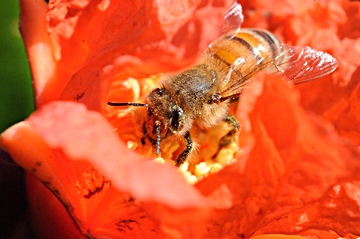Posts Tagged: varroa mites
Revisiting 'The 13 Bugs of Christmas'
It's time to revisit "The 13 Bugs of Christmas." You've heard "The 12 Days of Christmas," beginning with a single "partridge in a pear tree" and...
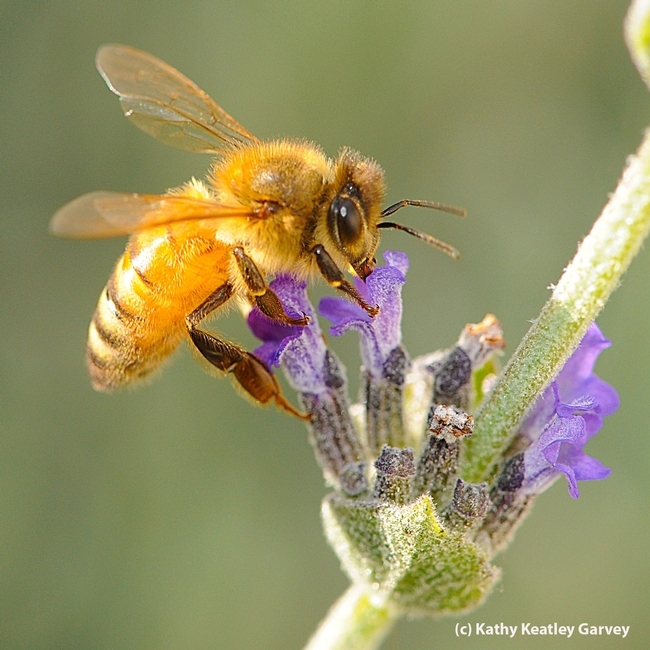
Golden bee (Cordovan) nectaring on lavender. (Photo by Kathy Keatley Garvey)
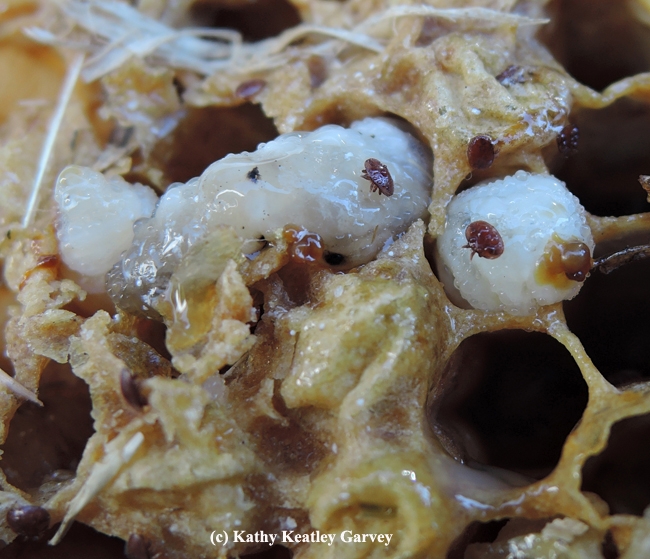
Varroa mites: Public Enemy No. 1. (Photo by Kathy Keatley Garvey)
Colony collapse disorder: still with us?
He's asked this question a lot.
"Does colony collapse disorder (CCD) still exist?"
Eric Mussen, UC Cooperative Extension specialist in the Department of Entomology and Nematology at UC Davis says "yes."
But the winter losses are being attributed to many other causes. "Less than 10 percent of the losses are now attributed to CCD," Mussen points out.
CCD surfaced in the fall of 2006 when beekeepers starting seeing their colonies decimated. They'd open the hive, only to find the queen, the brood and the food stores. The adult workers? Gone.
"CCD still exists and it appears as though in cases where multiple other stresses combine to severely weaken the bees, then viruses can overwhelm the immune system and the bees fly away and die," Mussen says. "We do not know what causes apparently-sick bees to fly from the hive, and we still have a difficult time describing how all the bees could become affected so swiftly."
"As colony losses mounted, the beekeepers had to spend even more time monitoring the conditions of their colonies. They noted things that might be done to prevent some problems that seemed to be starting. So, we are better at preventing the losses, but the percentage for about 25 percent of our beekeepers is still way too high."
Mussen says that "the other 75 percent of the beekeepers are doing relatively well (5-15 percent losses), so we have leveled off in national colony numbers. If the 25 percent can better determine what is going wrong, we should see improved data in the future."
Scientists attribute CCD to a combination of causes, including pests, pesticides, viruses, diseases, malnutrition, and stress. The No. 1 problem in the hives, they agree, is the varroa mite. Mussen writes about those topics - and others in his newsletter, from the UC Apiaries and "Bee Briefs." Both are available free on his website.
Mussen, who is retiring in June after 38 years of service, was recently named the recipient of the 2013-14 Distinguished Service Award, sponsored by the UC Division of Agriculture and Natural Resources.
Mussen devotes his research and extension activities toward the improvement of honey bee health and honey bee colony management practices. Mussen, who joined the UC Davis department in 1976, is known throughout the state, nation and world as “the honey bee guru” and “the pulse of the bee industry" and as "the go-to person" when consumers, scientists, researchers, students and the news media have questions about honey bees.
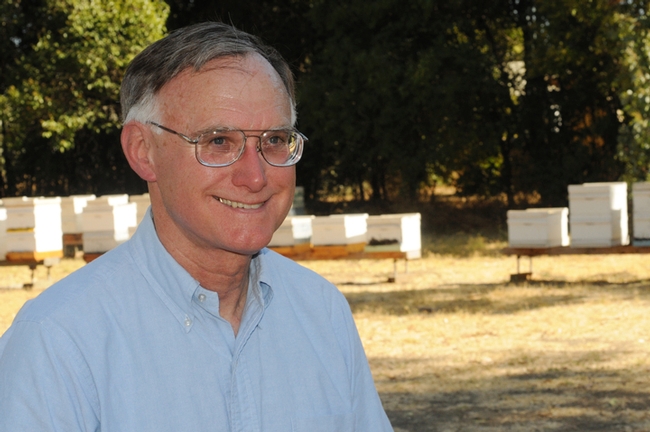
Extension apiculturist Eric Mussen in front of the apiary at the Harry H. Laidlaw Jr. Honey Bee Research Facility at UC Davis. (Photo by Kathy Keatley Garvey)
Targeting the Varroa Mite
Beekeepers know the varroa mite as "Public Enemy No. 1." And it's an enemy to be reckoned with, Extension apiculturist Eric Mussen told students in...
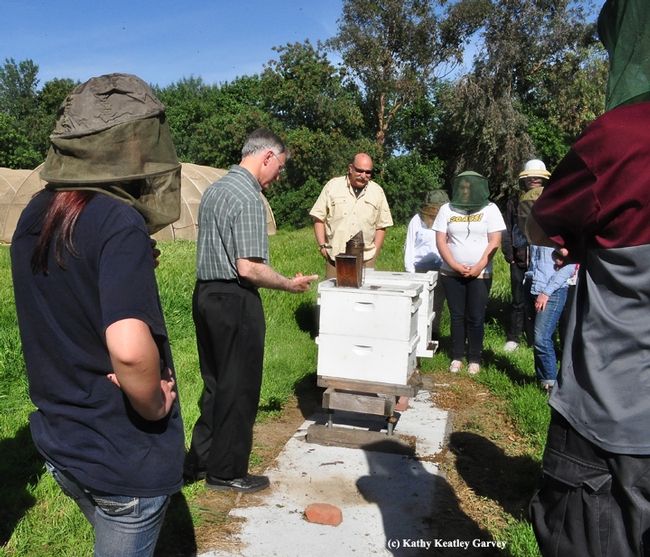
Extension apiculturist Eric Mussen (second from left) talks to a UC Davis class in the apiary of the Harry H. Laidlaw Jr. Honey Bee Research Facility. Third from left is forensic entomologist Robert Kimsey, one of the two class instructors.(Photo by Kathy Keatley Garvey)
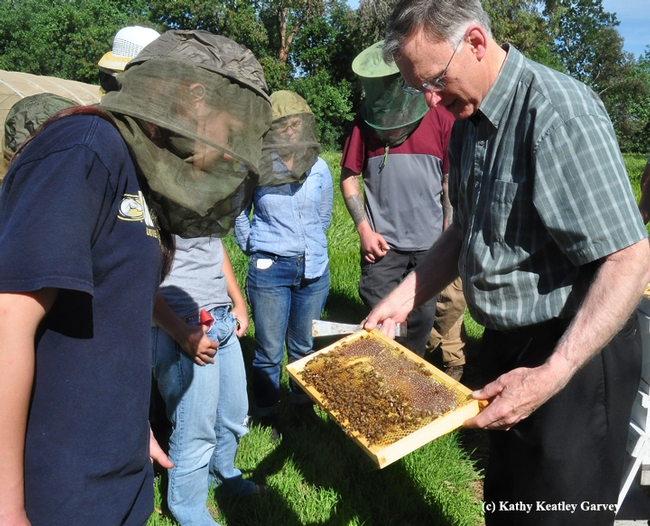
Extension apiculturist Eric Mussen shows a frame to the students. (Photo by Kathy Keatley Garvey)
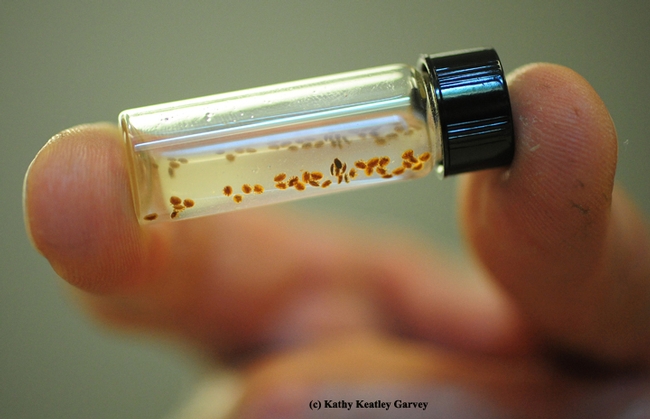
Varroa mites are reddish brown. (Photo by Kathy Keatley Garvey)
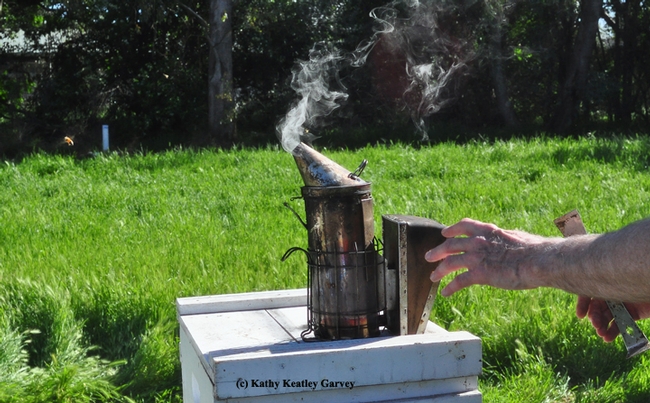
Extension apiculturist Eric Mussen reaches for a smoker as a bee (far left) buzzes off. (Photo by Kathy Keatley Garvey)
All About Honey Bee Colony Health
(Editor's Note: Due to the government shutdown, this seminar has been cancelled.) It's a topic we've all been waiting for: "Honey Bee Health and...
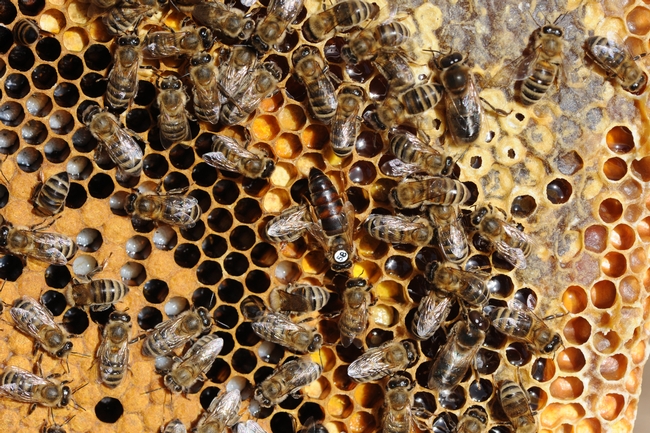
Inside the hive. (Photo by Kathy Keatley Garvey)
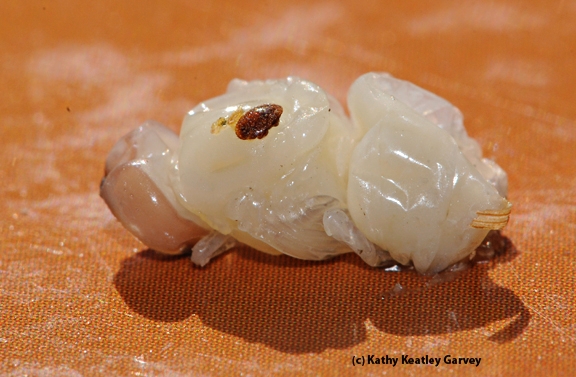
Varroa mite on a drone pupa. (Photo by Kathy Keatley Garvey)
Pollen: Precious Gold
The California Gold Rush (1848-1855) has nothing on honey bees. Sometimes foraging honey bees are covered with their own kind of gold--pollen--or...
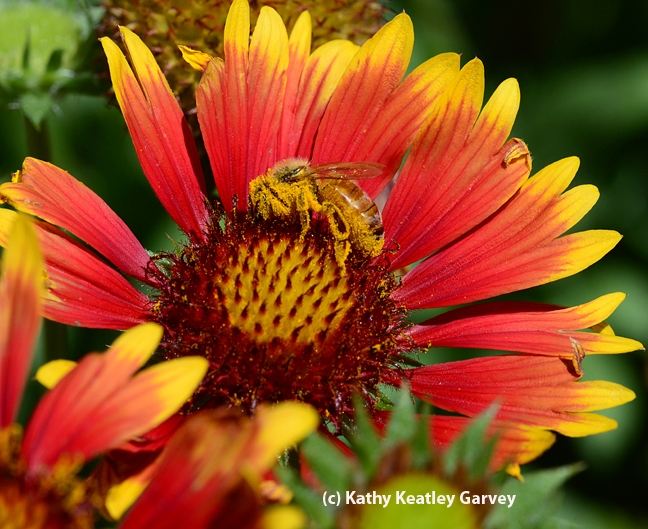
Honey bee is covered with pollen from a blanket flower, Gaillardia. (Photo by Kathy Keatley Garvey)
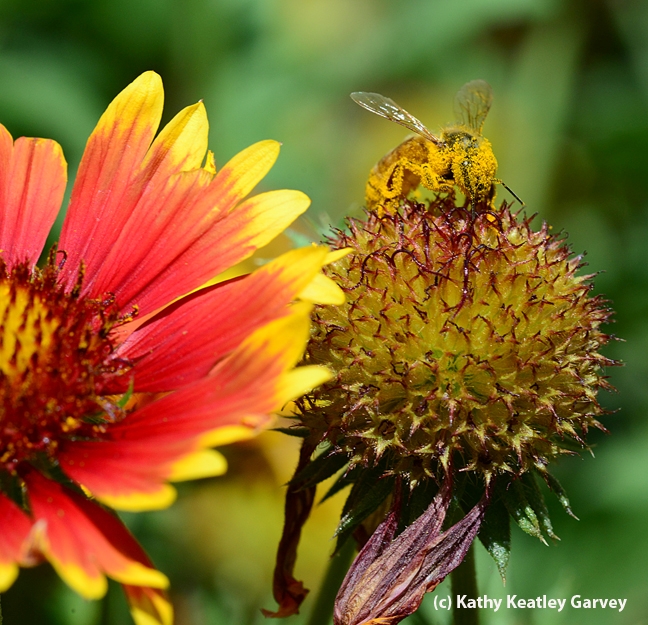
Honey bee is dusted with pollen from the blanket flower. (Photo by Kathy Keatley Garvey)
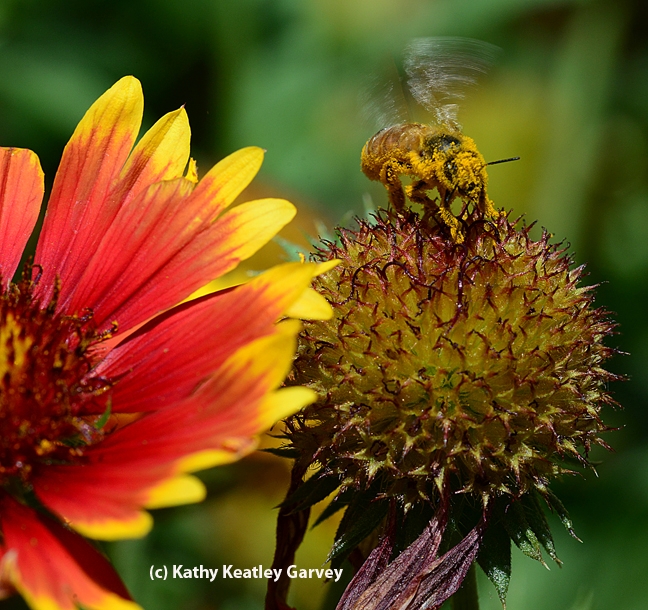
Lift off? The bee struggles to take off. (Photo by Kathy Keatley Garvey)


